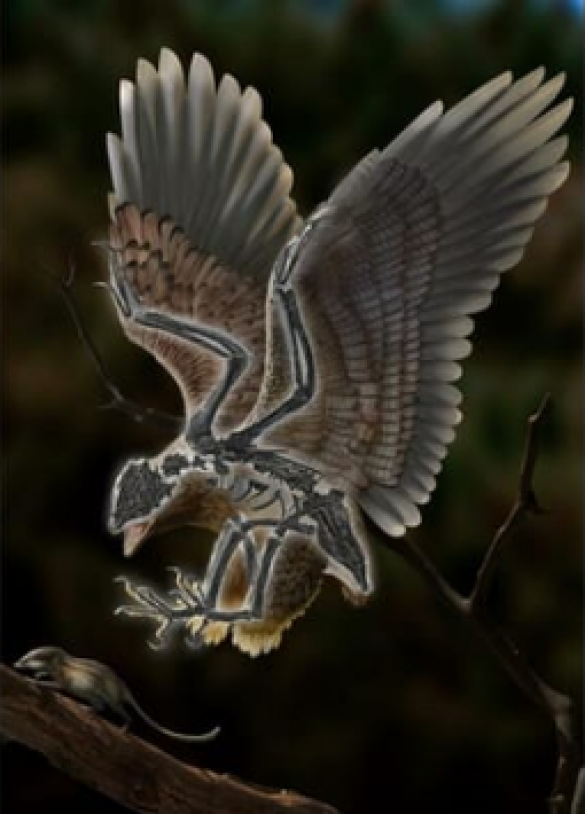
United States: A 120-million-year-old fossil discovered in China has one of the most unusual anatomical features: a dinosaur-like head and a bird-like body.
The Chinese Academy of Sciences studied the fossil specimen, named Cratonavis zhui, and found that the skull was shaped like that of the bird-like Tyrannosaurus rex dinosaur.
It is widely believed that birds evolved from dinosaurs, a transition that resulted in dramatic morphological and functional changes. Recently discovered Chinese fossils shed more light on this evolutionary process.
Also Read: NASA's Hubble Space Telescope captures a stunning star cluster 20,000 light-years away
Cratonavis zhui is found in the avian evolutionary tree between the long-tailed, reptile-like dinosaurs Archeopteryx and Ornithothors. The latter evolved many of the features seen in modern birds.
The sample was first examined by scientists using high-resolution computed tomography (CT). They later digitally removed the bones and reconstructed the skull's original shape and functions,
revealing that the skull of the fossil was dinosaur-like. Cratonavis was found to be unable to move its upper bill independently of the braincase and lower jaw.
Also Read: Meta's new AI advertising technology aims to reduce discrimination
For example, the Cratonavis fossil had a "surprisingly long scapula," a bone in the shoulder, and the first metatarsal (toe bone), which are absent in all modern birds, including fossils.
According to Wang Min, co-author of the study, the nature of the scapula allowed these species to better rotate their wings and compensate for their underdeveloped flight abilities.
With regard to the foot bone, the study claims that during the transition from dinosaurs to birds, the first metatarsal of Cratonavis was subjected to natural selection, which resulted in the shortening of the bone.
Once it reached its optimal size, which is less than a quarter of the length of the second metatarsal bone, the evolutionary potential of the bone was lost.
Also Read: New Motorola Mobile Phones 6.55-inch display Launched In 2023, check Specifications
Cratonavis zhui has a "unique mix" of anatomical features and serves as an example of how all living things represent an increase of change, and bird evolution along a wide range of different paths. How did it happen.